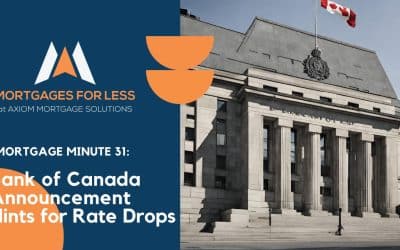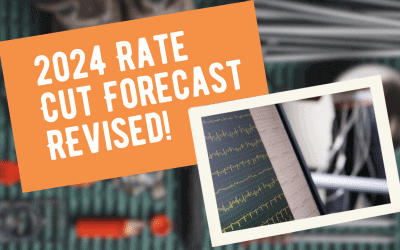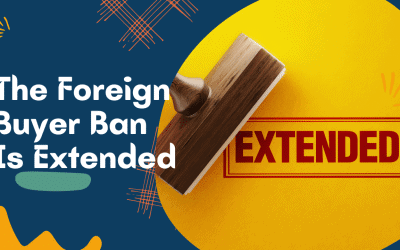Rates Up. Inventory Up.
More houses are available, but is now the time to buy them.
Well the market has settled down, is it time to jump in!
Our Take
The governments rate hikes over the first half of this year have had their desired affect. The housing market has normalized from the frenzy of 2021. But with rates up at this time many buyers are scared to pull the trigger. Watch to see where we think the rates will go from here, and why.
Want to Talk?
Don’t worry we are always here to answer your questions. In this changing rate environment it is more important than ever to work with a qualified mortgage broker. Apply Now or use the form to schedule a call and we can walk you through your options and show you the best path forward.
Speak With An Agent
Higher Rates Equals Inventory Increases

There is a LOT of talk in the media about interest rates, mortgage rates, and inflation. Is the sky falling? Or is there an opportunity here?
Fixed Interest rates have increased from an historic low in February 2021 of about 1.5% to now hovering both sides of 5%. This is certainly a higher increase than most expected and has several causes.
By most estimates, most borrowers should avoid selecting a fixed rate for their purchase, renewal, or mortgage refinance.
We are seeing the impact of rising rates is on the housing market of the largest markets in the country – Ontario and Vancouver – and seeing those bubbles deflate. Thankfully Calgary, Edmonton and Alberta have largely not experienced that kind of bubble, and are much less impacted by the rising rates. What we have seen is the desired effect of slowing house price increases which creates a great opportunity for new buyers!
Earlier in the year there were a few months where, in Calgary, demand outstripped supply, but things in Calgary are returning to normal. In Edmonton it wasnt nearly as dramatic. We spoke with lots of people back then, especially in Calgary, that wanted to sit back and wait for the crazy to calm down. That is happening now! The rate increases are doing their job and will make home ownership more attainable. On the screen you can see with the gray line for each city the Inventory level over the past year, and in blue the number of sales as well. In Calgary the sales exceeded listings around March which caused quite the squeeze. Things are getting better now, and we are seeing listings increase above sales levels again. Yes, interest rates are higher for a short period of time, but that costs far less than massive increases in price do!
So – let’s talk about the rates themselves. The Bank of Canada’s mandate is to keep inflation near 2%. And if you have paid any attention to prices at the store, or the news, you know that inflation is at a higher rate than we have seen in nearly 40 years. The Bank’s primary tool for managing inflation is the interest rate – but there is a limit to how effective that can be if demand isn’t the driving force behind the inflation, which is largely isn’t. Demand outside of Real Estate has returned from the disruption due to COVID, but isn’t unusually high. Best estimates today are that supply chain issues and a “sick supply system” are causing prices to rise and are responsible for 60 to 70 per cent of inflation. Add in the high cost of fuel, due in part to the removal of Russian oil from the global market, and we see that demand isn’t much of a factor. So, if supply and fuel can stabilize, then inflation will stop being a thing of concern. 2022 is still a transition year from a pandemic to an endemic.
The bank of Canada changing rates impacts the Prime Rate that we usually talk about. So this impacts Variable Rate mortgages, and since that is what most people are choosing that is what I will talk about.
Variable Rate Mortgages have a floating rate, but it doesn’t just change at random. There are 8 scheduled rate announcement dates in a year where prime can change. And you get a rate that is a specific discount from the Prime Rate which stays the same for the entire 5-year mortgage term. The rate itself changes, but that is due to changes in prime.
Today the Prime Rate is 3.7% and if we assume a discount of 0.95%, then the effective rate of your mortgage is 2.75%. If prime increases in July by the high end estimate of 0.75%, then the Prime Rate would increase to 4.45% and your mortgage rate would float with it to 3.5%. On most variable rates, you will see the payment change when the rate changes, but understanding how it changes relative to simply choosing a fixed rate mortgage up-front is important.
So let’s look at what we can expect by taking a variable rate now – and over it’s 5-year term..
I am going to lean on the professional analysis of Benjamin Tal. He is CIBC’s deputy chief economist and is highly respected.
The Prime rate is currently 3.7%. On July 13th we can expect that to increase to 4.20% or possibly as high as 4.45%. The high end of expectations is that it will peak somewhere near 5.2%, which is 1.5% higher than today’s rate.
So with new variable rate mortgages priced at about 2.75%. A 1.5% increase from today puts that peak at about 4.25%. And with 5-year fixed rates around 5%, you can see why nobody is choosing those!
One area where inflation has been caused by demand is the Canadian housing market, especially in Ontario and Vancouver. But those markets have already cooled dramatically and Tal believes it will soon be balanced and will be followed by a buyers’ market. That is where we have an opportunity! He tells us that we
“..need to see inflation starting to behave and the housing market slowing in order to make the point that there’s no need for the Bank of Canada interest rates to go beyond 2.5 per cent (which equals a prime rate of 4.7%). I can tell you that the difference between 2.5 and 3.5 per cent is the difference between no recession and a recession. It’s as simple as that.”
To say that again using PRIME Rate which we are more familiar with – he is saying that the difference between a Prime Rate of 4.7 and 5.7 is a recession. We don’t expect it to increase beyond 5.2% – which leaves variable rates closer to 4.25 at their peak.
Tal expects that two years from now, inflation will be back to 2%. And these higher interest rates are the tool for that.
And finally with that in mind – let’s briefly look at it visually. On the screen I am showing with the top, orange line, the rate at 4.99% over the next 5 years, and with the green line, an over-estimated high end of the variable rate over the same period. This projection assumes the worse case estimate – and a rate high enough that Tal says it would cause a recession. So, we can expect a fairly rapid increase in rates – but likely not as high as I am showing here – followed by a slow decline on the back end. And if the bank does push rates too high and triggers recession, that decline could be more rapid.
I would love the opportunity to connect with you. Please go ahead and use the form above and my team and I can help you out!
Meet The Author
Josh Tagg started his career as a mortgage in 2006. During his award-winning career, he has helped thousands individuals and families secure mortgages for their homes.

Josh Tagg
Owner, Mortgages For Less




0 Comments